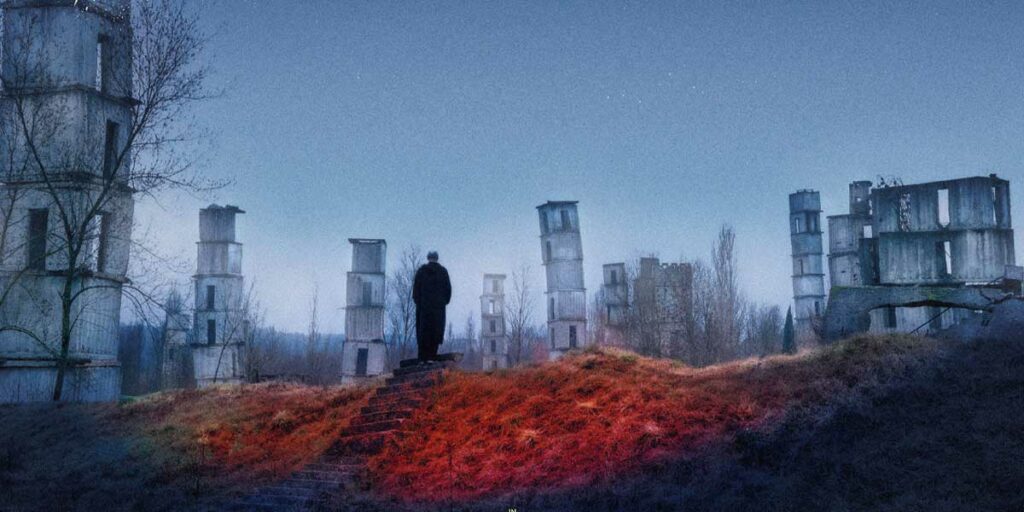Wim Wenders introduces the artist Anselm Keifer to a broader audience in Anselm, an insightful portrait of a most unconventional creative.
It’s just typical: you wait ages for a good Wim Wenders movie, and then two come along at once. The German filmmaker’s most ardent fans have to concede that his work’s varying quality is a feature, not a bug. Even when starring the likes of James McAvoy, Alicia Vikander or James Franco, Wenders’ more recent narrative features have struggled to get distributed. Then, earlier this year, the sublime Perfect Days proved to be Wenders’ finest feature film in three decades. Like his contemporaries Scorsese and Coppola, advancing years and inconsistency have not dimmed Wenders’ dedication to filmmaking, whether in narrative features or in documentary. Following Perfect Days’ success at Cannes, we get his latest documentary, Anselm, to complete a rousing double-bill.
Wenders’ documentaries tend to veer between loving tribute (Pina, his 3D ode to choreographer Pina Bausch), gentle probe (2018’s Pope Francis: A Man of His Word) or absolutely essential (The Salt of the Earth). On the surface, Anselm is most like Pina, another three-dimensional portrait of an artist and their art. The work of Anselm Kiefer demands three dimensions; it is full of texture and presence. From towering canvases, paint is deliberately formed into obstinate globules to make an impact. Nothing about Kiefer is small, neither his art nor his inspirations. In an early sequence, we watch him cycle(!) around his Paris studio, a maze of thousands of works. If you go into Anselm knowing nothing about its subject, the volume of his work alone speaks for itself.
It’s this sense of volume, of objects taking up valuable space, that seems to fascinate Wenders most. Why else would he employ 3D here? Anselm opens with some of Kiefer’s most recognisable sculptures, a series of wedding dresses with various metal accoutrements stabbing up to the sky, with the camera lunging at them to bring these bodiless garments looming over the viewer. 3D and Kiefer are all about space, and Wenders’ camera explores both with a nimbleness that belies the director’s near-eight decades. The efficacy of 3D bringing art to life onscreen is subjective, but Kiefer’s work is so full of presence that it works well in this format (Having seen the film in both formats, this writer suggests paying the surcharge for the 3D version). The breadth of his work is all-encompassing, from portraiture to canvases that stretch many storeys high, to installations that take up hundreds of acres. This is talent on a breathtaking scale.
Some of the best scenes in Anselm just watch the artist at work, and the scale of his work is matched by its eccentricity. Paint being slathered on by the bucketload is unconventional enough, but then comes the straw, metal and flamethrower to add the finishing touches. This snarling of unconventional materials is what makes Kiefer’s work so beguiling, and it reflects his thematic preoccupations. Unlike many of his contemporaries, the German artist interrogates his country’s Nazi past, lamenting the people and possibilities lost to its insidiousness. News footage from the openings of Kiefer’s exhibitions capture the contemporary controversies, while introspective narration from the artist himself offers loose explanations of his work. Attempts to recapture Teutonic legends from Germany’s Nationalist Socialist past meet a public still in denial of what happened, and Kiefer remains stoically defiant in the face of criticism.
Anselm is not concerned with answering the questions the works raise, but rather invites the viewer to engage with the questions themselves. The scale and grim beauty of the works is overwhelming, and Wenders does right by his friend by capturing those feelings for a mass audience. When we see Kiefer wandering the alleys of Venice to inspect his latest exhibition, the classical beauty of the city contrasts with the muddy grit of his work. Venice is naturally staggering, but Wenders posits Kiefer’s dreamy snarls of artwork needn’t be any less beautiful. Anselm is exactly the kind of 3D experience we need: intelligent, challenging and heartfelt.
Anselm will be released in UK cinemas and select US theaters on December 8, 2023.

